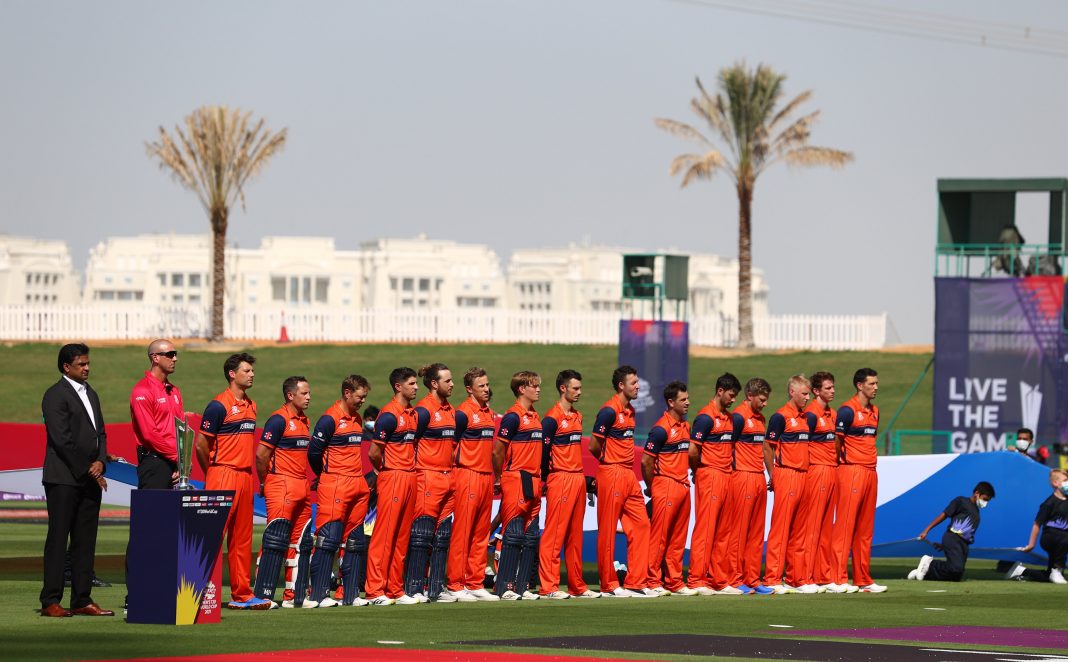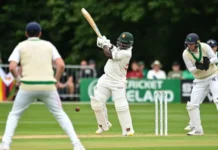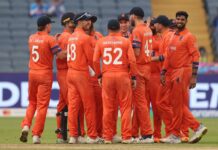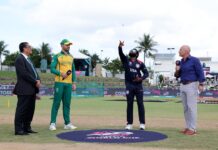After all the internecine skirmishing which has afflicted Dutch cricket for the past couple of months it came as something of a relief to see discussion return to more familiar battlegrounds when the December general meeting of the KNCB resumed for a second week, with cricket, and above all, domestic cricket, at its centre.
That is not to suggest that all the underlying issues have been resolved: there were clear hints that the rival factions are not yet ready to lay down their weapons, and it cannot be a good sign that the first mediator to have been identified has decided not to take on the challenge.
But another has been found, and in lawyer and former professional footballer Keje Molenaar the KNCB may well have someone with the necessary skills to cut the Gordian knot which the current Board seems to have tied for itself; he had, it was pointed out, had a hand in resolving the governance crises which have afflicted Ajax Amsterdam, one of the Netherlands’ leading football clubs.
That was not, however, the topic to which the continuation of the general meeting devoted most of its energies, and neither were the budgetary concerns which had caused so much angst a week ago: a question-and-answer session in advance of the meeting had resolved many of the doubts, and with an assurance that the Board would do everything in its power to eliminate as much as possible of the projected €327k. deficit by the time a definitive budget is presented in April.
Domestic competition matters bookended this week’s discussion, with Richard de Lange reporting at the outset on behalf of the task force which has been looking at longer term structures, and a lively series of exchanges under Any Other Business about the more immediate issue of what will happen in 2022.
These are the sorts of topics where club representatives understandably feel themselves principally obliged to consult the interests of their own club, while claiming at least that what is good for them is necessarily good for the general interest as well.
That certainly applied to the task force’s proposal to introduce a licensing system for clubs: although it remains uncertain exactly how such a system would work in practice, the suggestion that, for example, possession of a turf square should count in a club’s favour was immediately described as unfair by clubs who for whatever reason find themselves unable to acquire one.
At the root of this conundrum lies one of the unresolved, and perhaps unresolvable, questions of Dutch cricket: how much emphasis should be given to improving elite cricket, and how much time, energy and money should be devoted to feeding and extending the grassroots?
The task force’s answer to the latter was to call for a ‘Delta plan’ – a term which goes back to the Dutch response to the disastrous floods which hit the south-west of the country in 1953 and which has come to mean a far-reaching plan to meet any urgent need – to tackle the constant problem of cricket’s disappointingly low membership numbers.
This concern also underlay discussion of the 2022 update of the KNCB’s five-year plan, in which the effects of the pandemic were all too evident in the breakdown of progress towards the targets for 2023, although there had in fact been some increases in the numbers of senior men’s and youth teams and players.
But everyone acknowledged that a great deal remained to be done, and that the global target of an increase from 4800 players in 2018 to 6000 in 2023 remained a long way off.
There was particular concern about the state of women’s cricket, where the number of teams playing 40-over cricket has further declined since 2018, although the T20 competition is holding its own. How, one wondered, did this entirely justified anxiety square with the demand that not having women’s cricket should not count against clubs in any licensing system?
And behind all this is the eternal problem of the division of responsibility between the clubs and the central organisation of the KNCB: the clubs continue to cry out for leadership and support, but in the end much of the work of attracting and holding on to new members necessarily devolves upon volunteers at club level.
A good deal of work has been done by KNCB staff in developing projects like Cricket4Kids and Cricket4You, but until they start yielding significant numbers of new members for the clubs they will continue to be regarded with scepticism by those clubs – and, as Rood en Wit’s Carel Gilding pointed out in his traditional vote of thanks at the end of the meeting, it’s the clubs who need to help find ways to build that bridge.
At the other end of the spectrum the Netherlands does, of course, face an extraordinarily busy summer for its national men’s side, and Cricket Nederland BV CEO Betty Timmer outlined her organisation’s plans for the three home Super League series, with a 7000-seat stadium being erected at the VRA ground in Amstelveen for the matches against the West Indies and England in June and a 5500-seat version following at VOC’s Hazelaarweg complex in Rotterdam for the Pakistan series in August.
Ms. Timmer also confirmed that the West Indies series had been brought forward by a few days and will now start on 31 May, in order to allow the West Indies to complete their fixtures against Pakistan, abandoned last week because of an outbreak of Covid-19 in their touring party.
Once all that had been dealt with the meeting returned to domestic competitions, and the tricky question of how next year’s 12-team Topklasse might best be brought back to ten sides in 2023, with at least one Hoofdklasse club pushing for automatic promotion and describing the proposal that the Hoofdklasse champions should play off against the side finishing tenth in the Topklasse (the eleventh and bottom sides going down automatically) as ‘fairly protectionist’.
One thing was clear: the competition structures and playing conditions are a matter for the Board, although it is bound to take advice from a general meeting. Since the spring meeting, scheduled for 13 April, would be too late for such a process, it seems that we should be readying ourselves for another special general some time in the New Year. Be still, my beating heart!
You’re reading Emerging Cricket — brought to you by a passionate group of volunteers with a vision for cricket to be a truly global sport, and a mission to inspire passion to grow the game.
Be sure to check out our homepage for all the latest news, please subscribe for regular updates, and follow EC on Twitter, Facebook, LinkedIn and YouTube.
Don’t know where to start? Check out our features list, country profiles, and subscribe to our podcast.
Support us from US$2 a month — and get exclusive benefits, by becoming an EC Patron.







